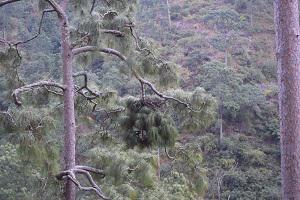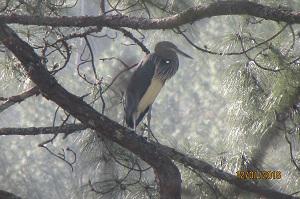Sonam Yonten
This project is anticipated to explore the interplay between forest fires and nest habitat selection by White-Bellied Heron (WBH) with respect to preference or not for vegetation structure and composition altered due to fires. It will also generate a trend of nest selection pattern of the bird due to influence of forest fires along the stretch of Punatshangchhu basin for past 10 years.

Nest trees of Nangzina and Harachu in Wangdue.
White-bellied Heron is the second largest heron in the world. Since 2007, International Union for Conservation of Nature (IUCN) declared it as a critically endangered bird species. It is classified thus owing to its extremely small and declining population. The decline is predicted to increase with multiple agents of disturbance (BirdLife International, 2016). Also in Bhutan, Royal Society for Protection of Nature (RSPN, 2011) reported the drop in population. Though the specific cause of this decline lack an in-depth studies, however, it is attributed towards predator, habitat loss, fire incidence, water-based recreation, and the alike.

The project will take place along the basin of Punatshangchhu located in the west central part of Bhutan. Punatshangchhu and its tributaries have been identified as a permanent habitat of WBH from the river systems of Bhutan. One of the noticeable disturbance along this stretch of river basin is forest fire among many others. Fires usually occur during the dry season and it is known to alter WBH’s habitat and other associated ecological functions. RSPN has observed the birds abandoning the nests after occurrence of wild fire in the areas where the bird have nested. The wild fires are either caused due to an anthropogenic activities or natural phenomena.
Nests of the WBH are particularly found on tall Chir Pine trees (Pinus roxburghii) at an altitude of 700-1000 masl. The WBH prefer sparsely dispersed trees with evidence of fire scars, limited ground debris and without mid-story vegetation. So, this substantiate the possible interaction between this bird and the habitats developed due to fire incidences (RSPN, 2011). Still, there is paucity of information regarding the study of WBH nesting and its relationship towards the forest fire. The present project will study the impacts of forest fire on nest selection pattern by WBH along the Punatshangchhu basin. It will also help the general public to gain a better understanding about the ecological consequences of fires to this bird.